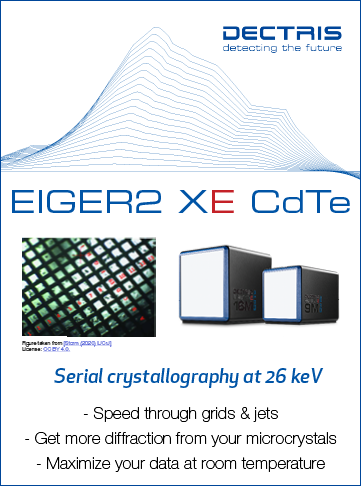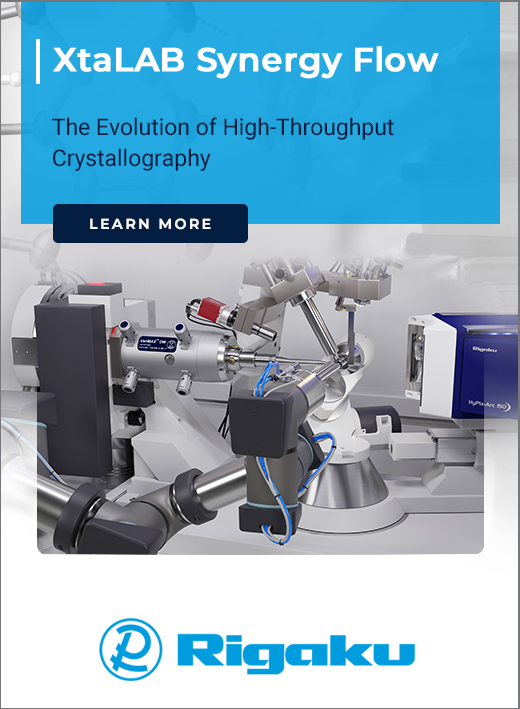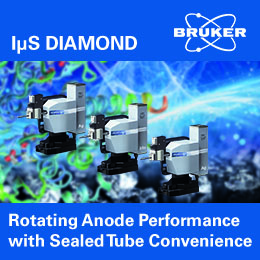
Awards and prizes
Ute Kolb, joint winner of the 2020 Gjønnes Medal
![Ute Kolb [Ute Kolb]](https://www.iucr.org/__data/assets/image/0017/150281/Ute-Kolb.png)
Ute Kolb speaking at the Electron Crystallography School 2011 in Erice. Photo credit: Peter Müller.
The IUCr Gjønnes Medal in Electron Crystallography has been awarded to Sven Hovmöller (Professor Emeritus, Stockholm University, Sweden) and Ute Kolb (Head, Centre for High Resolution Electron Microscopy, Johannes Gutenberg-Universität, Mainz, Germany) for their pioneering work in the field of electron crystallography, particularly for developing 3D electron diffraction techniques.
In the 1990s, Sven Hovmöller and his group combined high-resolution transmission electron microscopy (HRTEM) images and zone-axis electron diffraction patterns for the solution of atomic structures. In 2007, Ute Kolb and her group developed the automated electron diffraction tomography (ADT) method, which allows the collection of 3D electron diffraction data suitable for structure analysis. As a result, atomic structures of many organic and inorganic crystals were solved. In 2008, Sven Hovmöller and his group suggested an alternative approach to collecting the 3D electron diffraction data – the Rotation Electron Diffraction (RED) method – which is also successfully used for the structure solution of complex structures, including proteins. Today, these methods are widely used by crystallographers all over the globe for the structure solution of new materials.
In addition to their outstanding scientific results, which were published in high-ranking international journals (e.g. Nature and Science), both scientists have been very active as organisers of international schools on electron crystallography over many years. Thus, they have had a crucial role in the formation of a generation of electron crystallographers.
Professors Hovmöller and Kolb will receive their award during the 25th IUCr Congress in Prague, Czech Republic, in August 2021, where they will share the presentation of a Keynote Lecture.
The IUCr was pleased to be able to conduct interviews with the recipients about their life and work. The interview with Ute Kolb is reproduced below; please go here for that with Sven Hovmöller.
Interview
Ute, we would like to congratulate you on winning this prestigious award.
Thank you very much. I am extremely pleased that the crystallographic community is honoring my work and my achievements in electron crystallography.
Could you tell us a little about your childhood and early education.
I was born in 1963 and grew up in Bingen, Germany, a small town in the UNESCO World Heritage Site on the river Rhine. My father, an X-ray technician, and my mother, a medical-technical assistant, besides their normal jobs also did agriculture and ran a fish farm. My mother later stayed at home after the birth of my youngest sister. Even then, I was more interested in the technical processes in my father's workshop than in the housework – as expected at that time. Although I could learn a lot from my father in this way, I owe it to my mother that I was able to take my A levels. She actively supported me against the then-common view that "Girls don't need a high school diploma and should later only care for their family and children anyway". This support has given me the motivation to pursue my goals.
What or who inspired you to pursue a career in science?
I have always been interested in mathematical correlations and during my school days at the Hildegardis School, a Catholic grammar school for girls, I dreamed of becoming a teacher of mathematics and physics. However, just before the final choice of subject, I decided on chemistry as the less descriptive and more directly applied natural science in my eyes. I received great mental support for and during my studies from my then boyfriend and now husband, Norbert Bittner. He was also the one who encouraged me to apply for summer studies at CERN in Geneva. In my childhood, due to the agricultural orientation of my parents, trips abroad were extremely rare. Thus, my view of the world broadened abruptly with this first contact with international students and international research. Even though there wasn’t the need for inspiring me to pursue in science, this experience with scientists from all over the world opened up my mind to the diversity and satisfaction that lies in it.
And what attracted you to electron crystallography?
During my studies, following my penchant for mathematics and physics, I focused on physical chemistry and graduated in this field. But it was not until I started my doctoral studies in the group of Martin Dräger in Inorganic Chemistry that I got to know the fascination of crystallography and its symmetries – by applying X-ray diffraction methods. When I decided to join Ingrid Voigt-Martin's group as a postdoc after completing my PhD, I was motivated by the desire for a new challenge. The electron diffraction method used to acquire data in this group offered me the scope for development – by applying my knowledge of X-ray structure analysis to quantification of electron diffraction data, I was able to combine my passion for structure analysis with my love of crystallography. I was impressed by the unique feature of an electron microscope to obtain images and diffraction patterns of nanoscopic particles. And it was the stunning aesthetics of electron diffraction patterns that immediately captivated me. Even today, I still consider electron crystallography to be the most direct method of understanding or teaching diffraction physics. I learned the structural analysis of electron diffraction data during extremely instructive stays with Douglas Dorset in Buffalo and Chris Gilmore in Glasgow. For evaluation of zonal diffraction data we used the programs of Sven Hovmöller. However, the structural analysis of small organic molecules with data from conventional acquisition turned out to be extremely problematic and often only succeeded by combining it with other information. I soon realized that in order to solve structures not accessible by X-ray powder diffraction directly from electron diffraction data, I had to improve the acquisition of diffraction data considerably. When later, in 2007, the first ab-initio structural analysis of barite was performed, I did not yet realize that this would be the foundation for a widely applicable 3D electron diffraction method.
This success was made possible by a postdoctoral position of the state of Rhineland–Palatinate in 1997 for the development of an alternative method for crystal structure analysis by electron diffraction. I am especially grateful to Gertrude Kiel, who encouraged me to take this step as well as to Wolfgang Tremel who supervised my habilitation and supported me throughout my scientific career. With the acquisition of further funds, I was able to put together a small but very powerful working group. I would especially like to mention my first co-workers, Tatiana E. Gorelik and Enrico Mugnaioli, who were directly and significantly involved in the development of the methods.
What are the advantages and limitations of electron crystallography when compared with X-ray crystallography?
The fundamental difference between electron radiation and X-rays is their charge and the much stronger interaction with matter associated with it. For example, X-ray structural analysis requires crystals in the range of cubic micrometers, whereas electron diffraction requires only a scattering volume in the cubic nanometer range. In addition, light elements can be better detected with electron radiation. A unique feature is the possibility to switch directly between the projection of the potential (image) and its Fourier transformation (diffraction) in the transmission electron microscope as well as to determine the elemental composition of the particle by spectroscopic analysis. All data can be tomographically recorded separately or in combination. This allows, for example, to select individual crystallites from a phase mixture and collect 3D diffraction data for crystal structure analysis, or vice versa, to evaluate diffuse scattering patterns detected in the diffraction space and to correlate them with the imaging of defects in the particle. Compared with X-ray diffraction, more complex sample preparation is required, depending on the material and the problem. The strong interaction of electrons with matter requires the preparation of thin samples, which can lead to artifacts. In addition, the sample should be stable during the measurement in vacuum, in the electron beam and under cooling. In-situ investigations in the transmission electron microscope are intensively developed, but this type of experiment is more easily accessible in the case of X-ray diffraction. The acquisition of a 3D electron diffraction data set with conventional CCDs takes about 10 min, which is further reduced by the use of new detector technologies. This not only gains time but also reduces the already low electron dose required for diffraction experiments compared with imaging methods even further. In addition to the technical and methodological development of transmission electron microscopes, the first dedicated electron diffractometers are already under development. The high complementarity of electron crystallography to X-ray diffraction, but especially to X-ray powder diffraction, suggests that in the future more and more electron diffractometers will be added to the equipment of laboratories and departments for structural elucidation.
Does electron crystallography have a special role to play in coronavirus research and other global problems?
Electron crystallography has already been used to image the coronavirus and, by elucidating the structure of its spikes with the help of 3D reconstructions, will certainly make further important contributions to the fight against the virus. Furthermore, electron crystallography is already involved in many projects to solve global problems. Scientists are using findings from electron crystallography, for example, to improve catalysis, energy storage, for alternative energies, in aerosol research, for CO2 reduction, in the field of biomineralization, in the analysis of active ingredients for pharmaceutical purpose and in medical technology. In addition, many open questions in mineralogy or archaeology that had been open for decades have been solved.
You and Sven have both been members of the IUCr Commission on Electron Crystallography (formerly IUCr Commission on Electron Diffraction). What would you say is the Commission's most important function?
In my view, the Commissions of the IUCr have their key role in the worldwide networking of scientists, in improving the visibility of the respective field of interest and as a lobby for the scientific community. Networking is particularly important for electron crystallography, since all scientific disciplines that use electron scattering are represented here. However, the strong diversity also provides us the opportunity to learn from each other, to work together internationally and interdisciplinarily as well as ultimately to act together to promote the whole field of electron crystallography. The organization of pure sessions on electron crystallography or joint symposia and contributions at large conferences allow this interdisciplinary communication, while workshops enable a deeper and more concentrated exchange. Both are important. However, the training and networking of young scientists, first in schools and then in more in-depth workshops or through doctoral student exchanges, plays a special role, as this is where the foundation for future generations is laid.
![[Erice 2011]](https://www.iucr.org/__data/assets/image/0009/148707/erice-2011.png)
Electron Crystallography School 2011 in Erice. Left (from left to right): Enrico Mugnaioli, Andrew Stewart, Iryna Andrusenko, Ute Kolb, Tatiana E. Gorelik and Sebastian Schlitt (photo credit Dr Peter Müller, MIT, Cambridge, MA, USA). Right: group photo.
You have been commended for your role in raising a generation of electron crystallographers through your international schools, many of which have been supported by the IUCr. With the necessary transition to online meetings in 2020, how do you see the future for face-to-face schools?
The benefits of international schools go far beyond the mere transfer of knowledge. The knowledge itself can easily be passed on through online sessions. What is missing, however, are the aspects that go beyond hard facts, such as personal conversations with teachers and fellow students, spontaneously arising debates on an open question or the experience of emotional moments. I still remember how deeply impressed I was by my encounter with Dorothy Crowfoot Hodgkin at the Nobel Laureate Conference in Lindau in 1989, or by my first visit to the Electron Crystallography School in Erice in 1997, and how at this occasion the world in my head expanded, similar to what happened in my summer studies at CERN. When I got the chance to lead the Electron Crystallography School 2011 in Erice together with Louisa Meshi and Anatoly Avilov, we made sure that all disciplines of electron crystallography were linked as much as possible and planned the school consciously parallel to a powder diffractometry school. Three years later, my simultaneous teaching activities at the Johannes Gutenberg University Mainz and at the Technical University Darmstadt enabled me to organize an electron crystallography school in Darmstadt. A special feature of the school was the extensive direct training facilities at both locations with transmission electron microscopes from different manufacturers and different levels of expansion. At both universities, I have taught for many years the basics of electron crystallography to students already in the main study period via lectures and practical courses. For the summer semester 2020 the lecture was held online. The practical course was realized with a specially made educational film and an online supervision via webcams from the neighboring room.
In my opinion, we will still need schools and workshops in the future as face-to-face events for the above-mentioned reasons. On the other hand, online meetings offer a much more efficient and less time-consuming way of communication – as concepts and platforms are further developed and improved, they might offer new formats and possibilities that supplement the traditional formats. However, nowadays we must take into account the existence of the coronavirus and develop new concepts that are offering the best possible experience and inspiration together with the highest possible security for all participants of these schools.
![[ECS 2014]](https://www.iucr.org/__data/assets/image/0003/148710/ECS2014.png)
Electron Crystallography School 2014 in Darmstadt.
How important is the recent initiative by the European Crystallographic Association and other organisations to provide childcare facilities during their meetings?
For a scientist, attending a conference should not become a choice between family and career. Therefore, everything should be done to avoid this balancing act. Childcare is an important measure but does not apply to infants. I still remember the IUCr meeting in Florence. My daughter Helena was just 5 months old and became the youngest participant of the conference with a badge issued especially for her. Fortunately, my husband was able to accompany me so that I was free to follow the presentations. Not only in Florence, but also at several other conferences he took part in the “Social Program”, looked after our daughter and kept my back free for science. In case the use of the childcare facilities is not adequate, for example for young parents with infants, in my opinion the financial support of the IUCr for an accompanying person would be helpful, possibly even just by granting free access to the conference area.
What other interests do you pursue?
In my free time I prefer to devote myself to my family and activities that allow me to take a deep breath. These include outdoor activities such as climbing, cycling or hiking, but also music. In the time of my studies and my doctorate I could still take the liberty of participating in several choirs. Unfortunately, this is no longer the case. I take a lot of pleasure as well in design and live it out by sporadic work in the garden.
Of which of your professional achievements do you feel most proud?
It was a particularly proud moment when the first publication on the structural analysis of barite was printed in 2007. Ultimately, 10 years of gradual method development with many ups and downs were behind this publication. When I started working on electron diffraction, very few scientists were working on this topic and data acquisition was difficult and time-consuming.
During the following years my group was able to show on a variety of different compounds, such as minerals, zeolites, oxidic materials, metal-organic networks or small organic molecules like pharmaceuticals, that the use of 3D electron diffraction data taken from unoriented crystallites allows an ab initio structural analysis and proves the efficiency of the principle of automatic diffraction tomography (ADT). The community of electron crystallographers has grown rapidly since then. Today, many new developments are available, which differ both in the way the data is acquired and how it is processed, but all follow the same basic principle of electron tomography. The variety of methods offers the possibility to future generations of electron crystallographers to choose the optimal method for the respective material, the problem and the available equipment. In my group, for example, we prefer to use ADT in STEM mode coupled with electron beam precession, which allows us to image even very small and thin crystallites with sufficient contrast to track the crystal during tilt. I was especially proud of the solution of the long-time unknown crystal structure of vaterite on a 30 nm small crystallite in 2012 and the solution of a new hydrate phase of CaCO3 in 2019, the calcium carbonate hemihydrate.
Many already existing transmission electron microscopes can be used directly or with some extension for 3D electron diffraction methods (3DED), thus being applicable for less well-equipped laboratories. In addition to the large centers, a broad international base of electron crystallography experts can thus be established, who are able to address the huge variety of crystallographic questions raised for the solution of existing and upcoming global problems.
Thank you very much for your time and congratulations once again.
In the course of time I met many fascinating people who impressed me in different ways, shaped me and made a great contribution to my scientific career. I would like to take this opportunity to thank everyone who supported me on my not always straightforward path and made this moment possible.
Copyright © - All Rights Reserved - International Union of Crystallography








